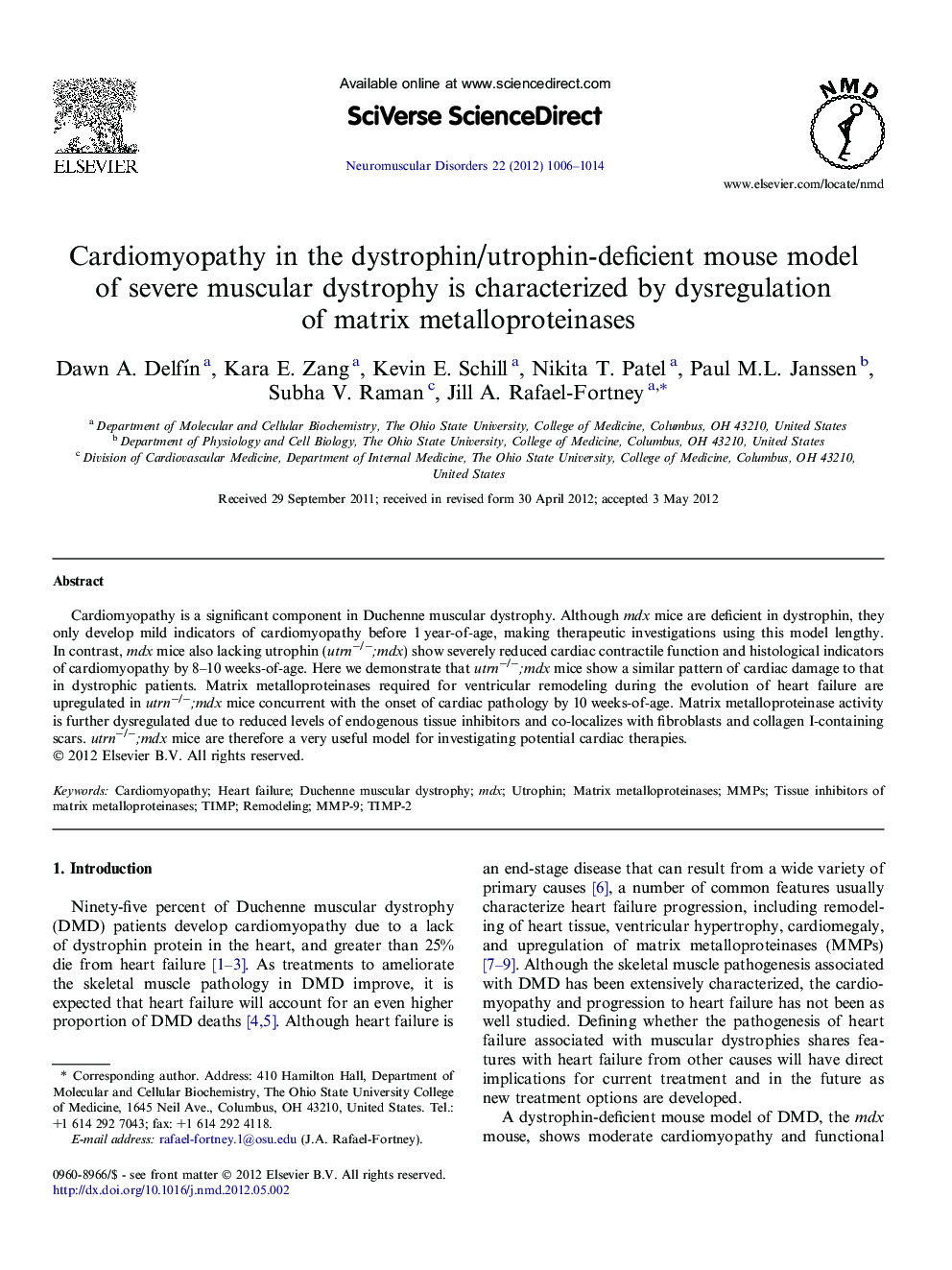| Article ID | Journal | Published Year | Pages | File Type |
|---|---|---|---|---|
| 6041281 | Neuromuscular Disorders | 2012 | 9 Pages |
Abstract
Cardiomyopathy is a significant component in Duchenne muscular dystrophy. Although mdx mice are deficient in dystrophin, they only develop mild indicators of cardiomyopathy before 1Â year-of-age, making therapeutic investigations using this model lengthy. In contrast, mdx mice also lacking utrophin (utrnâ/â;mdx) show severely reduced cardiac contractile function and histological indicators of cardiomyopathy by 8-10Â weeks-of-age. Here we demonstrate that utrnâ/â;mdx mice show a similar pattern of cardiac damage to that in dystrophic patients. Matrix metalloproteinases required for ventricular remodeling during the evolution of heart failure are upregulated in utrnâ/â;mdx mice concurrent with the onset of cardiac pathology by 10Â weeks-of-age. Matrix metalloproteinase activity is further dysregulated due to reduced levels of endogenous tissue inhibitors and co-localizes with fibroblasts and collagen I-containing scars. utrnâ/â;mdx mice are therefore a very useful model for investigating potential cardiac therapies.
Keywords
Related Topics
Life Sciences
Neuroscience
Developmental Neuroscience
Authors
Dawn A. DelfÃn, Kara E. Zang, Kevin E. Schill, Nikita T. Patel, Paul M.L. Janssen, Subha V. Raman, Jill A. Rafael-Fortney,
